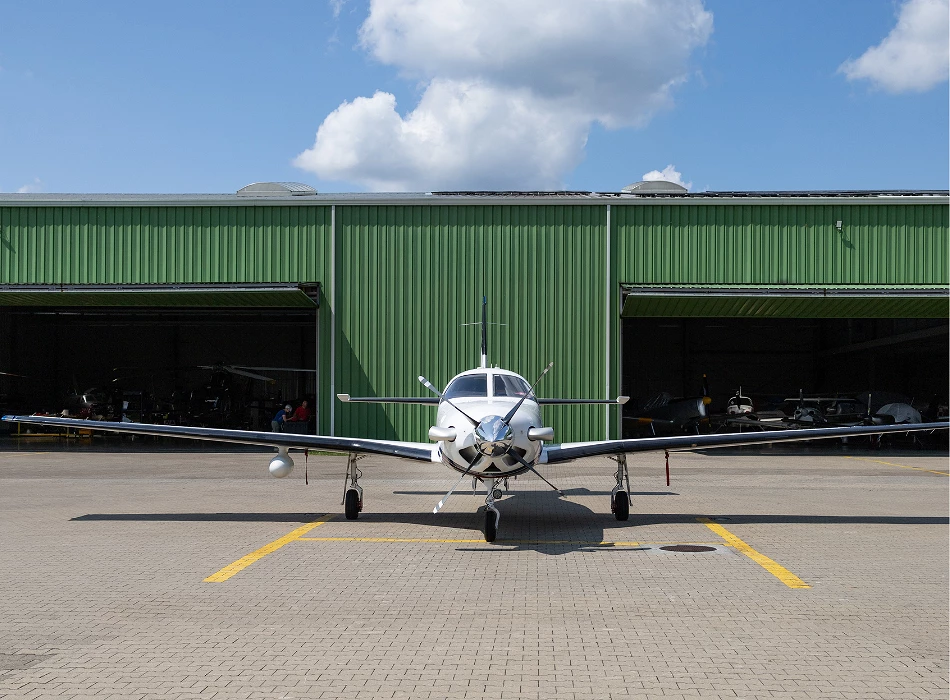
Purchase of an aircraft - a tool for tax optimization
expert support
The purchase of an aircraft, whether in the form of an airplane or a helicopter, can be a strategic investment decision that, in addition to its functional and operational advantages, carries significant tax benefits. A key optimization tool is depreciation - an accounting and tax process that allows the cost of acquiring an asset to be accounted for over time.
The following is a detailed analysis of the aircraft depreciation mechanism, along with its practical implications for owners and users.
1. classification of aircraft as fixed assets
According to Polish tax regulations, the purchase of an aircraft by a company or a sole proprietor qualifies as the acquisition of a fixed asset. For this to be the case, the following conditions must be met:
- the entity has ownership (or co-ownership) of the aircraft,
- the item will be used in business operations,
- its expected useful life exceeds 1 year,
- the initial value exceeds PLN 10,000.
Classification of the TIN
In the Classification of Fixed Assets (TIN), aircraft are classified in group 7 - Means of Transport, subgroup 7.6 - Aircraft.
Examples:
- light aircraft (up to 5,700 kg) - TIN 7.60.1
- helicopters and tiltrotors - TIN 7.60.2
- communication, corporate aircraft - TIN 7.60.3
2. determination of the initial value of the aircraft
The initial value, on which depreciation is calculated, includes not only the purchase price, but also:
- transport costs (e.g., ferry flight)
- import duties and fees (if purchased from outside the EU)
- excise tax (if applicable)
- registration costs (ULC, EASA)
- insurance for the time of transport
3. depreciation methods
Polish regulations provide for several depreciation methods that an aircraft owner can use:
a) Straight-line (standard) depreciation
- the most common method
- write-offs are evenly distributed each year
- for aircraft, the typical rate is: 10% per year → depreciation period: 10 years
You can also set the rate individually (e.g., up to 25%, which means 4 years of depreciation) if the aircraft is used intensively or technically wears out faster.
b) Accelerated depreciation (individual)
- applies to used or improved fixed assets
- you can adopt an individual rate based on the planned period of use
- in practice, this means you can, for example. depreciation of an airplane in 2-3 years, while complying with regulations (e.g., Article 22j Paragraph 1 of the PIT Act)
c) Degressive (declining)
- higher write-offs in the first years of use
- advantageous with intensive use and planned resale of the machine after several years
4. depreciation vs. form of financing
Purchase with cash or credit
- the company owns the aircraft - it is entitled to depreciation
- interest on the loan may also be deductible
Finance lease
- the aircraft in a finance lease is treated as the property of the lessee - it is entitled to depreciation
Operating lease
- the asset belongs to the lessor
- depreciation is carried out by the lessor, and the lessee recognizes the lease payments as a deductible expense
5. practical benefits of aircraft depreciation
A. Reduction of taxable income
Depreciation can significantly reduce the tax base of CIT or PIT - example:
initial value of the aircraft: PLN 5,000,000
depreciation rate: 20% (individual)
annual depreciation allowance: PLN 1,000,000
at 19% CIT → tax saving: PLN 190,000 per year
B.Better cash management
Depreciation is not a cash expense, but an accounting expense - it allows you to show higher costs without a real outflow of funds from the company.
C.Tax planning in holdinggroups
In holding structures, it is possible to purchase an aircraft from one company and make it available for use by another, which can promote tax optimization at the group-wide level.
6. residual value and disposal of aircraft
Once depreciation is complete, the aircraft may still have a significant market value. Resale of such an asset:
- generates sales proceeds that can be offset by tax costs
- allows reinvestment in new equipment, often with a new depreciation period
7 Risks and constraints
- incorrect determination of the initial value may result in a tax adjustment
- if the aircraft is also used for private purposes (so-called mixed use) - depreciation may be partially limited
- with very aggressive individual depreciation (e.g., 50% per year), there is a risk of tax office challenge - documentation required to justify intensive wear and tear
Summary
The purchase of an aircraft can be not only an operational tool, but also an effective tax strategy.
Key advantages include:
- spreading the cost of the investment over time
- lowering the tax base
- flexible forms of depreciation
- possibility of optimization within capital groups
At the same time, due to the complexity of regulations and the individual nature of each transaction, it is recommended to work with a tax advisor and a law firm specialized in civil aviation to fully realize the potential of depreciation without tax risks.


I invite you to contact me. I will provide all the necessary information.